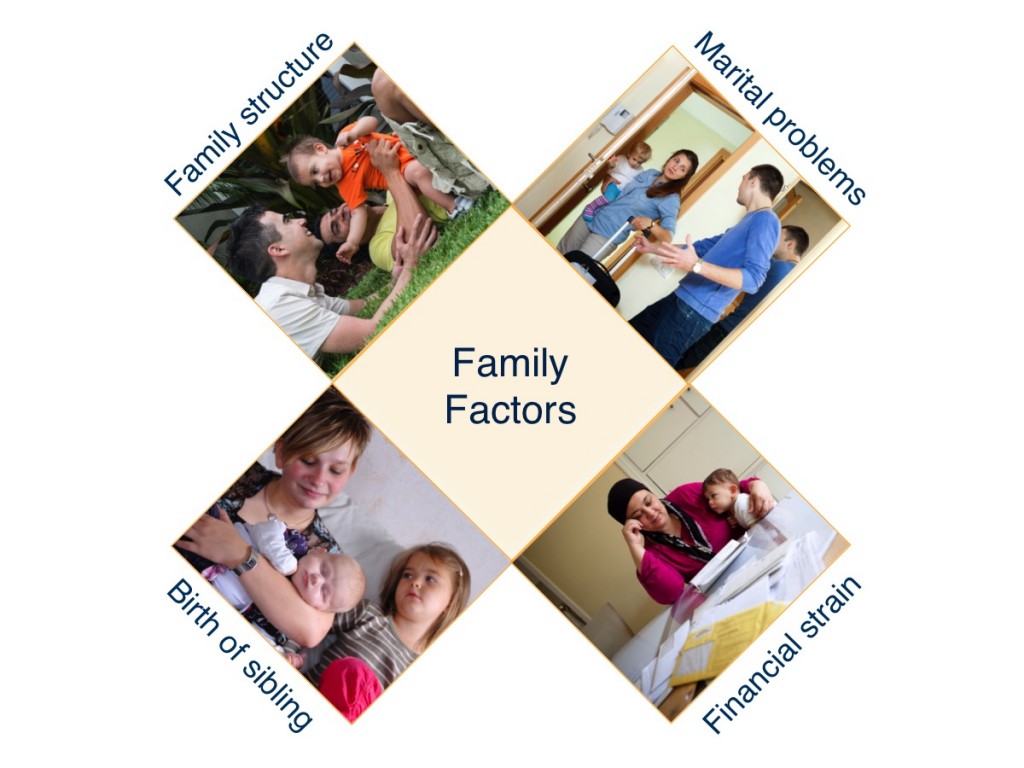
A variety of family factors can also affect attachment quality. These factors can refer to financial struggles, a strained marriage, or even the birth of another baby. Different family situations may affect the sensitivity of parental care and the quality of parent-child interactions. If a parent isn’t feeling safe or secure it will be harder for her to buffer her child from stress. This can lead to a child feeling less secure in her attachment relationships. This is especially true when problems last for a long period of time.
Researchers have also explored whether family structure plays a role in early attachment. Are there differences in attachment quality for a child raised by a single parent compared to two parents? What about same-sex parents? Or grandparents? Research shows that family structure does not influence attachment security. What is important is whether the parent is sensitive to their child’s needs. Social and financial factors sometimes coincide with family structure and affect attachment quality. Consider a child raised by a single parent. That family may experience financial hardship due to one income. Or maybe the child saw conflict between his parents before they divorced. These types of negative factors relate to insecure attachment. But marriage status and sexual orientation of the parents do not. As you will see in the next section, children can have different attachment relationships. They may also change their attachment behavior over time.
-
- Attachment
- the lasting emotional bond that forms between infants and their primary caregivers
- Proximity maintenance
- a child stays close to an attachment figure for comfort and protection
- Safe haven
- an attachment figure provides comfort and safety when a child feels unsure
- Secure base
- an attachment figure’s presence gives a child the confidence to explore her environment
- Separation distress
- a child experiences stress or anxiety when an attachment figure leaves